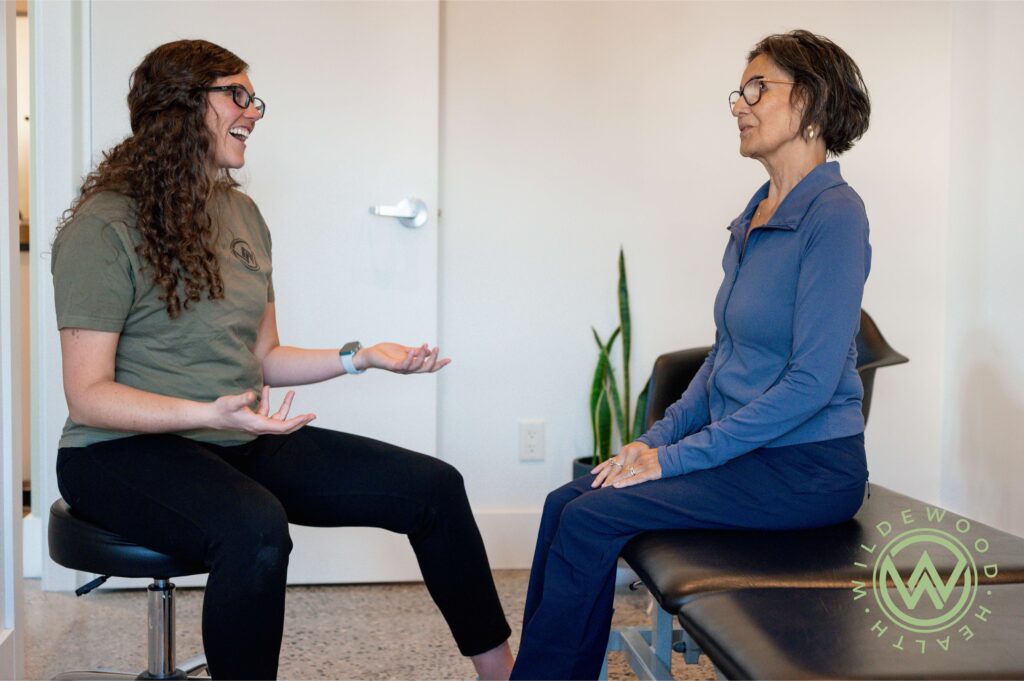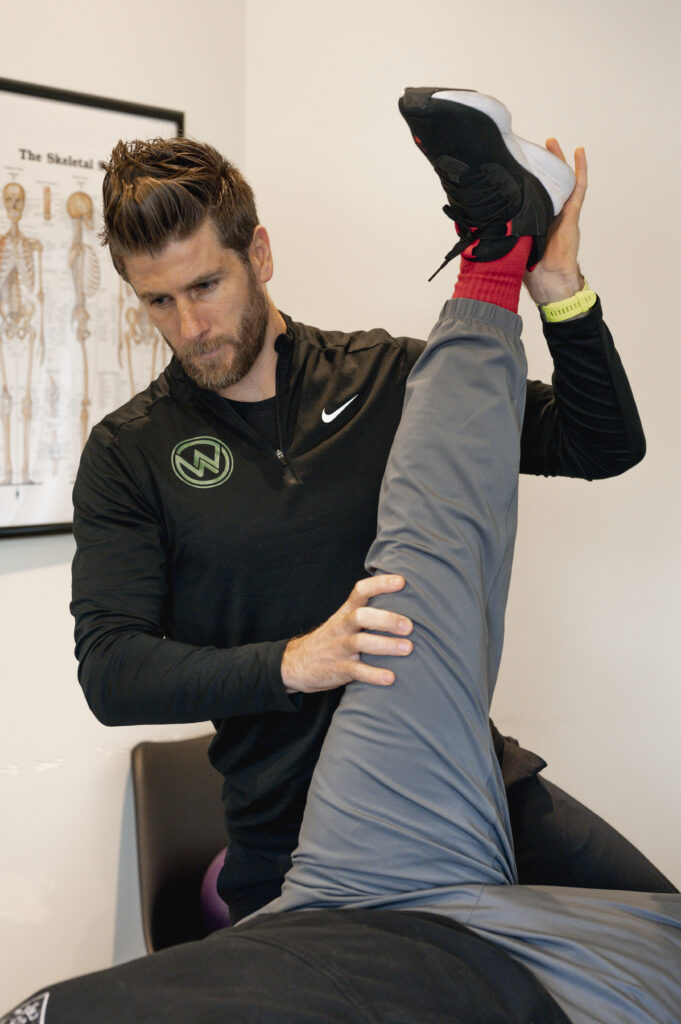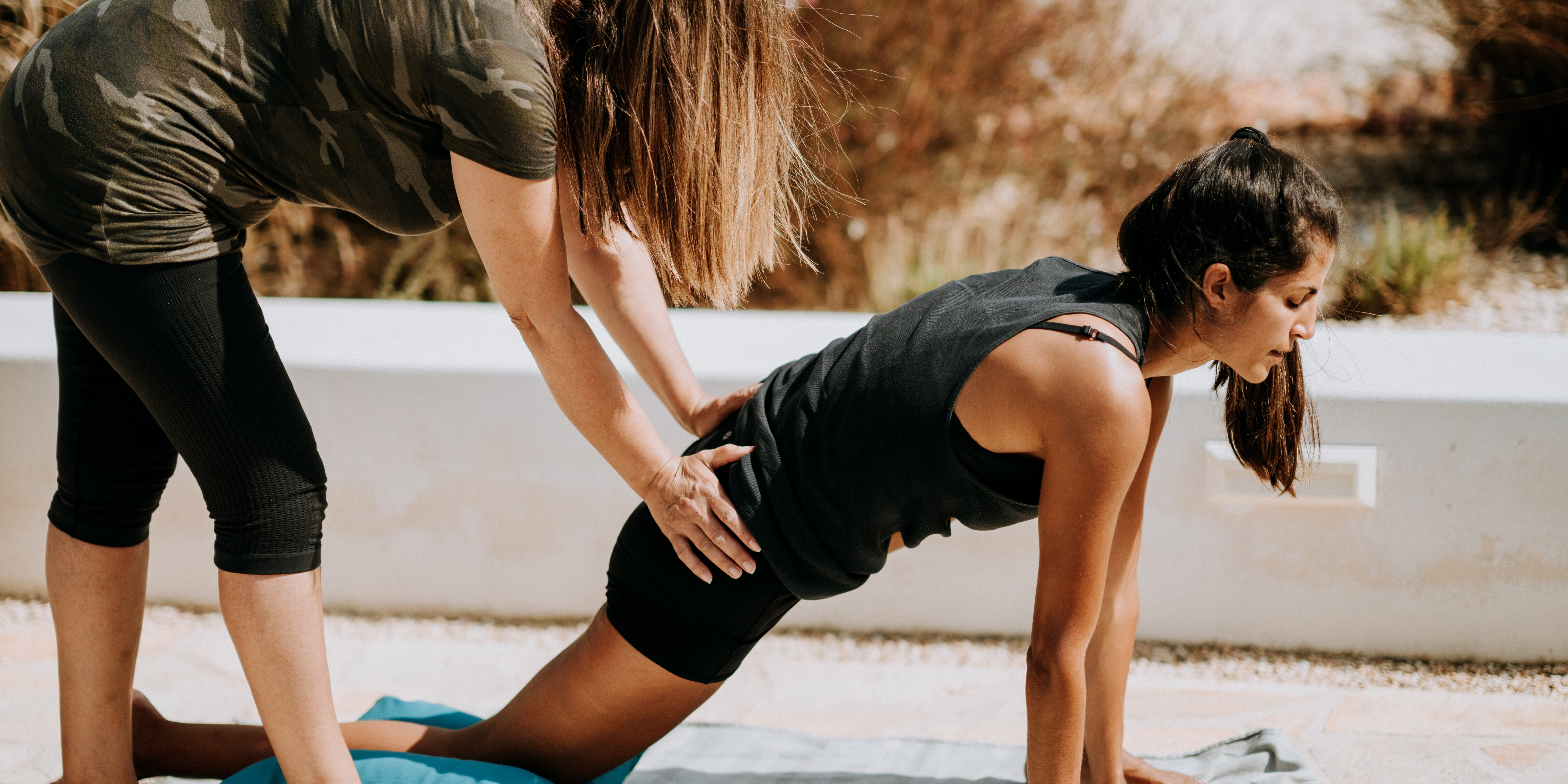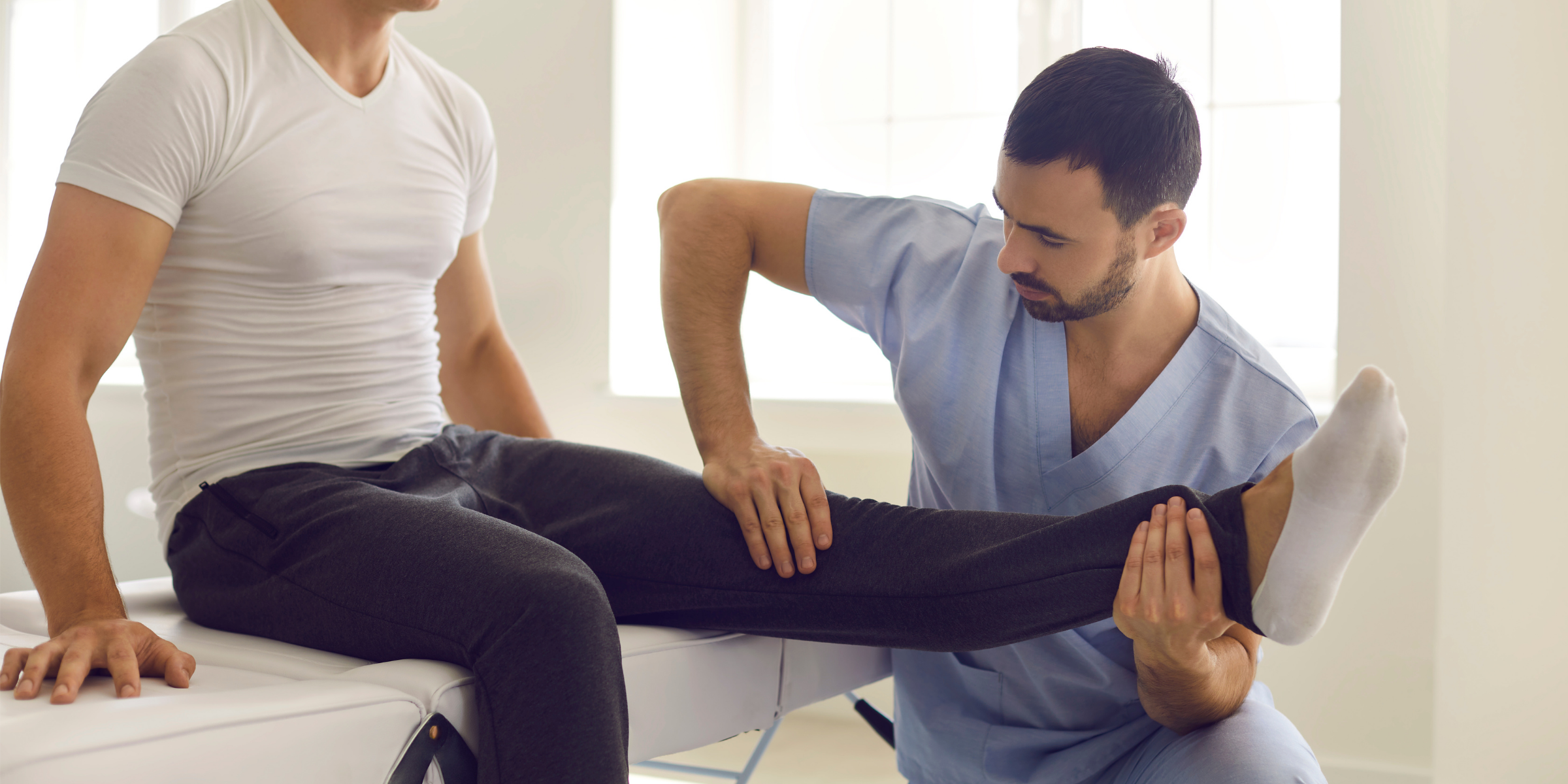Whether you’ve been dealing with persistent pain or recently incurred an injury, the first step towards recovery may not necessarily involve a visit to the doctor. In many cases, seeking the expertise of a physiotherapist, kinesiologist, or athletic therapist can kickstart your rehabilitation journey without the need for medical intervention. This blog will guide you through the process of starting your rehab with these specialists, shedding light on what to expect and how to tailor your rehabilitation program to your unique needs.

Who Should Book an Assessment
People with the following conditions are advised to book an initial assessment:
- Acute Injuries: From a rolled ankle on the sports field to a hamstring strain or shoulder pain, immediate attention from a rehabilitation specialist can prevent further damage and speed up recovery.
- Chronic Pain: Whether it’s related to work, a previous injury, or conditions like pelvic floor dysfunction, chronic pain can be treated with targeted rehabilitation.
- Post-Surgery Rehab: Individuals recovering from surgeries like hip or knee replacements, fractures, or any orthopedic procedure can significantly enhance their recovery through tailored rehabilitation programs.
- Injury Prevention: Seeking guidance from a physiotherapist, kinesiologist, or athletic therapist can help in preventing future injuries, especially as we age or engage in repetitive activities.
Initial Assessment
During the initial assessment, individuals can anticipate a thorough examination aimed at gaining a comprehensive understanding of their condition and creating a tailored rehabilitation plan. The process typically begins with detailed inquiries into the specific injury and an exploration of the individual’s medical history, shedding light on potential contributing factors.
Following this, a holistic assessment of posture and general movements is conducted to identify any overarching issues that may be influencing the injury. The examination then narrows down to a focused assessment of the area or areas of injury. This involves evaluating the strength and range of motion in the affected region and performing special tests designed to pinpoint the exact structures or causes contributing to the condition.
By delving into these critical aspects, practitioners can form a nuanced understanding of the individual’s physical health, laying the groundwork for a targeted and effective rehabilitation program.

Rehabilitation Program
The rehabilitation program is a comprehensive approach that encompasses various modalities to address injuries and promote recovery effectively. It involves a combination of exercises, treatments, and modalities such as soft tissue therapies, intramuscular stimulation (IMS), mobilizations, passive range of motion, and stretching.
The choice of which avenue to take in the rehabilitation process is contingent on several crucial factors:
- the nature of the injury, whether acute or chronic
- the current range of motion and strength
- the specific type of injury, and the phase of the healing process
- pain levels
By carefully assessing these factors, practitioners can customize a rehabilitation program that precisely addresses the unique needs of the individual, ensuring a targeted and effective path towards recovery.
What a Session Could Look Like
Initial Phase Exercises
In the initial phase of the rehabilitation journey, characterized by potentially high levels of pain or symptoms, limited range of motion and strength, or being in the early stages of healing, the focus is on providing targeted interventions to alleviate discomfort and initiate the recovery process.
This stage often involves one-on-one sessions with a skilled physiotherapist, kinesiologist, or athletic therapist. During these sessions, a variety of manual therapies, such as soft tissue treatments and mobilizations, are employed to address specific areas of concern. Passive movements and intramuscular stimulation (IMS) may also be incorporated to gently stimulate the affected muscles and tissues.
The emphasis is on gradually introducing exercises suitable for the individual’s current condition, considering the unique challenges posed by the injury. These personalized one-on-one sessions serve as a crucial foundation for the subsequent phases of rehabilitation, aiming to manage pain, enhance mobility, and lay the groundwork for a more comprehensive exercise regimen as the recovery progresses.
Initial phase exercises may include the following:
second Phase Exercises
In the second phase of the rehabilitation process, as you begin to regain range of motion and strength, the focus shifts towards further intensifying your exercises. This stage is particularly significant for individuals experiencing a decrease in pain levels and symptoms.
The comprehensive approach involves incorporating all the treatments from the initial phase while progressively integrating more challenging exercises. These exercises are designed to stimulate muscle groups and enhance functional movements, promoting the restoration of normal physical capabilities.
Sessions during this phase may take the form of overlapping sessions, where a combination of treatments and exercises are employed, or one-on-one sessions tailored to address specific needs. The goal is not only to facilitate recovery but also to ensure that the exercises are precisely aligned with your progress, allowing for a gradual and steady return to full functionality.
Second phase exercises may include the following:
third Phase Exercises
In the third phase of rehabilitation, marked by significant progress, individuals typically experience increased strength, expanded range of motion, and notably diminished pain or symptoms. This stage signifies a pivotal moment in the recovery process, with a heightened emphasis on exercise as a means of consolidating and enhancing gains achieved in the earlier phases.
While all the treatments from the preceding stages may still be integrated, there is a pronounced shift towards a more exercise-centric approach. This phase is often characterized by the introduction of advanced and targeted exercises promoting further muscle strengthening and functional improvement.
Sessions during this stage can either be overlapping, combining treatments with exercise routines, or one-on-one, allowing for focused attention to the individual’s evolving requirements. The objective is to fine-tune the rehabilitation plan, ensuring that the exercises are aligned with the individual’s increased strength and improved range of motion, ultimately leading to a return to optimal functionality and life performance.
Third phase exercises may include the following:
life performance program
In the culmination of the rehabilitation journey, the Life Performance Program signifies a remarkable achievement as individuals reach a state of full range of motion and experience minimal to no pain or symptoms.
This phase is characterized by a shift towards an exercise-focused approach, aiming to restore individuals to their regular activities and optimal functional capacities. The Life Performance Program introduces exercises that not only maintain but further enhance overall strength and flexibility.
Group sessions become a valuable component, fostering a supportive environment where individuals can share their successes and motivate each other as they transition back to full activity. These sessions not only solidify the gains made during rehabilitation but also promote a sense of community, celebrating the collective journey toward optimal health and well-being.
Life Performance exercises may include the following:
Rehabilitation is a personalized journey, and the process may differ for each individual. Tailored to your needs based on assessments, injuries, symptoms, and progress, starting your rehab journey with a physiotherapist, kinesiologist, or athletic therapist is a proactive step towards a healthier, pain-free life. Don’t hesitate; book an appointment today to see one of our practitioners and begin your path to recovery.

Additional links
What is Physiotherapy and How Can it Help Me? – Wildewood Health – Nanaimo Kinesiology and Athletic Therapy
Frequently Asked Questions About Kinesiology – Wildewood Health – Nanaimo Kinesiology and Athletic Therapy





